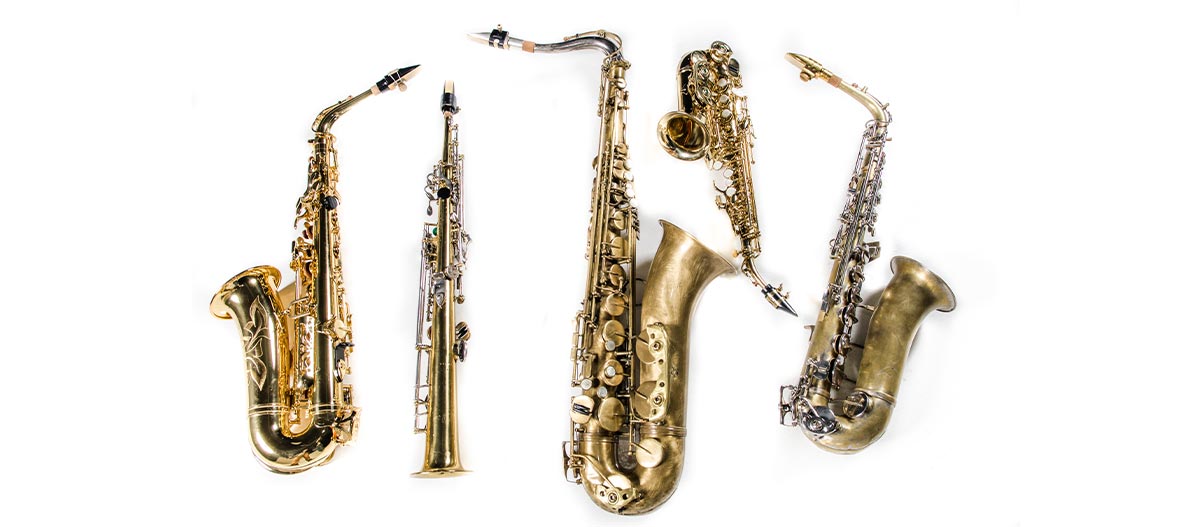As a saxophonist, I often hear amused comments from other musicians suggesting that the saxophone belongs to the brass family—a confusion that’s understandable given its shiny, golden appearance.
Many people, including non-musicians, mistakenly classify it as a brass instrument.
Yet, despite its metallic body, the saxophone is indeed a woodwind instrument, identifiable by its single-reed mouthpiece, similar to that of the clarinet.
Invented in the 1840s by the Belgian instrument maker Adolphe Sax, the saxophone was intended to combine the powerful sound of brass instruments with the expressive flexibility of woodwinds.
Originally designed for military and symphonic bands, it quickly found its place in the musical world and established itself as an essential instrument in jazz, classical, and contemporary music.
But what truly sets the saxophone apart from other wind instruments? Why does it stand out both visually and acoustically?
This article explores the key features that make the saxophone a unique instrument, including its construction, tonal flexibility, and remarkable instrumental variety.

Sound flexibility and richness of tone
What sets the saxophone apart from other wind instruments is its extraordinary tonal flexibility.
Unlike the clarinet, with its naturally warm and woody tone, or the flute, with its clear and airy sound, the saxophone can shift between a range of tonal colours.
Depending on the musical context, a saxophonist can produce a soft and warm sound or, on the contrary, a more punchy and metallic tone.
This ability to shape the sound allows for great expressiveness and adaptability to various musical atmospheres.
For example, a jazz saxophonist might favour a soft and deep tone for a melancholic ballad, while a brighter and edgier timbre will energise a blues piece.
Furthermore, due to its relatively recent invention, the saxophone’s repertoire largely relies on transcriptions of works originally written for other instruments, such as flute or violin solos by Bach, and even string quartets.
As a result, saxophonists often strive to imitate the delicacy and fluidity of the violin or the flute, while still retaining the freedom to explore bolder, more adventurous sounds.
This versatility makes the saxophone a truly unique instrument, capable of adapting to a wide range of repertoires and musical styles.

Material and construction: a hybrid between woodwind and brass
Unlike most wind instruments, which are traditionally made of wood, the saxophone is made of brass, giving it its shiny appearance and wide conical bore.
This characteristic often leads people to mistake it for a brass instrument. However, its classification as a woodwind is confirmed by its method of sound production—it uses a single reed attached to a mouthpiece, just like the clarinet.
This unique combination of a brass body and vibrating reed allows it to benefit from the characteristics of both instrument families.
From the brass family, it inherits power and sound projection, allowing it to stand out within an ensemble. From the woodwinds, it retains great flexibility of articulation, a wide dynamic range, and refined expressiveness.
Another distinctive feature lies in its key system, inspired by the Boehm system used in flutes and clarinets, which enhances playing dexterity and ergonomics.
In addition, its conical bore—wider at the bell than at the mouthpiece—gives it a rounder, more lyrical sound than cylindrical-bore instruments like the clarinet.
This unique combination of brass construction, vibrating reed, and conical bore gives the saxophone an expressive power and versatility unmatched among wind instruments.

A rich and varied instrumental family
The saxophone also stands out for the diversity of its instrumental family. There are eight main types of saxophones, covering a wide range of registers—from the high-pitched sopranino to the contrabass with its deep, resonant tones.
The most commonly used are the soprano, alto, tenor, and baritone saxophones.
The soprano, with its piercing and bright tone, is similar to the clarinet or oboe, while the alto—highly favoured by beginners—combines warmth and agility.
The tenor, with its expressive and warm tone, is emblematic of jazz, while the baritone provides a deep and powerful foundation in ensembles.
Beyond these models, the sopranino and bass saxophones further extend the saxophone’s sound range, while the rare contrabass—one of the largest wind instruments—produces deep and spectacular tones.
This wide range of registers allows the saxophone family to cover parts traditionally assigned to high woodwinds or low brass, and to perform a broad repertoire—from jazz solos and orchestral transcriptions to chamber music.

Conclusion
The saxophone stands out among wind instruments due to its hybrid design, combining a brass body with a single-reed mouthpiece, giving it both power and expressiveness.
Its tonal flexibility allows it to alternate between warm, mellow tones and brighter, sharper sounds, adapting seamlessly to a wide variety of musical styles.
This versatility has enabled it to establish itself in jazz, classical music, and contemporary genres.
Furthermore, the richness of its instrumental family — ranging from the sopranino to the contrabass — strengthens its role both in ensembles and solo performances.
Capable of imitating both the fluidity of string instruments and the power of brass, the saxophone remains one of the most expressive and dynamic instruments in the musical world, continuing to evolve and inspire generations of musicians.








